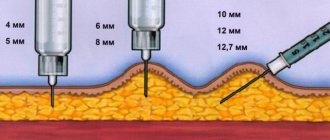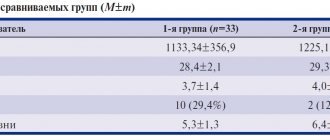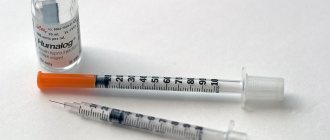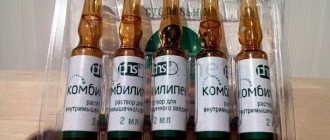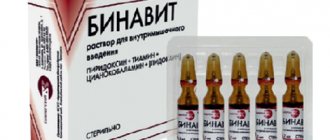Ginipral during pregnancy: general information
Premature birth in medicine is defined as the onset of labor between 22 and 37 weeks. The main problem is that even with modern technologies, more than half of premature babies die in the first month of life. And 50% of those who manage to survive suffer from severe pathologies of the central nervous system throughout their lives. The survival of such newborns depends on the timely provision of appropriate medical care in third-level medical institutions. These are medical organizations capable of providing specialized high-tech support.
A unified theory of the occurrence of this pathology during pregnancy has not yet been developed. But in practice, in medicine, premature labor is divided into threatened and begun. During initial diagnosis, the first ones are characterized by the following complaints of expectant mothers:
- pain in the lower back and lower abdomen of moderate and high intensity;
- hypertonicity of the uterus.
These signs are usually observed long before the possible onset of labor. Experts believe that the uterus should be in a relaxed state for most of the gestational period, and only closer to childbirth should training contractions begin. If the uterus contracts intensively earlier than expected, this increases the risk of spontaneous abortion. To eliminate this condition, a whole range of therapeutic measures is used, including the use of medications, including selective beta2-adrenergic agonists.
The onset of premature birth is characterized by:
- regular contractions (at least four in twenty minutes);
- shortening and smoothing of the cervix.
In this case, doctors try to prolong the pregnancy if possible by artificially suppressing contractions. This technique is called tocolysis. Tocolysis allows you to prepare the fetus for premature birth and is most often implemented through the same beta2-adrenergic agonists. According to clinical protocols distributed by the Russian Ministry of Health, the most studied of these medications is Ginipral.
Prolonging pregnancy increases newborn survival rate
Composition, principle of its action, release form
Ginipral is a wide group of tocolytic drugs, which include:
- beta2-adrenergic agonists;
- oxytocin receptor blockers;
- calcium channel blockers;
- cyclooxygenase inhibitors.
The active substance of Ginipral is hexoprenaline sulfate, which is a beta2-adrenergic stimulant (adrenomimetic) and acts on the reproductive system of a pregnant woman as follows:
- helps relax the muscles of the uterus;
- reduces the intensity of uterine contractions;
- suppresses prematurely occurring contractions.
Hexoprenaline inhibits beta2-adrenergic receptors, which causes relaxation of smooth muscles. Over several decades of studying and using Ginipral, the possibility of prolonging pregnancy with its help for a period of one day to seven days is considered proven.
Currently, this drug can be purchased in Russia only in the form of a solution for intravenous administration in ampoules according to a doctor's prescription. Previously popular tablets are no longer available today. The fact is that the European Medicines Safety Agency forced the manufacturer to recall Ginipral tablets back in 2013. Their effectiveness has been found to be significantly lower than the risk of developing cardiovascular disease.
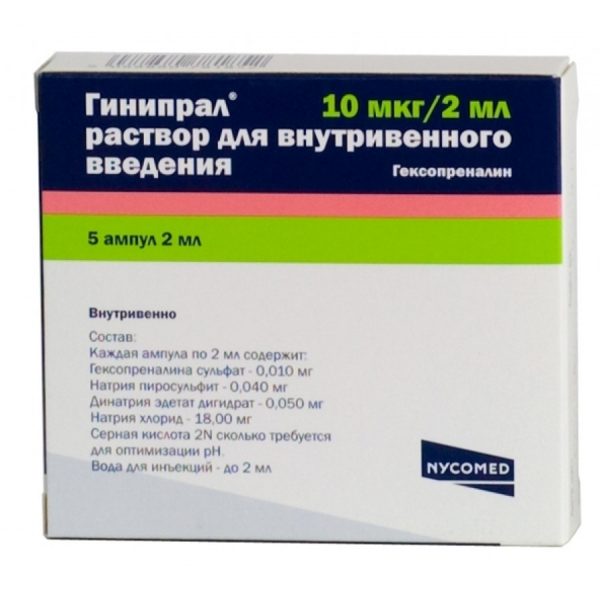
Ginipral is the drug of choice for prolonging preterm labor
Can it be used in the early and late stages, the effect on the fetus
Hexoprenaline crosses the placental barrier and may cause adverse reactions in the fetus. But according to statistics, side effects occur more often in the expectant mother. According to the instructions, this medication can be used from the second trimester if doctors believe that the benefits from it significantly outweigh the possible negative consequences. Some doctors, if necessary, can prescribe Ginipral as early as 16 weeks. However, most of them believe that it is effective somewhere from 24–25 weeks, since it is at this time that the adrenergic receptors of the uterus become susceptible to beta2-adrenergic agonists.
Ginipral solution for injection 10mcg/2ml 2ml No.5
Ginipral solution for injection 10 µg/2ml 2 ml No. 5
Ginipral Buy Ginipral in pharmacies
DOSAGE FORMS solution for intravenous injection 10 µg solution for intravenous injection 5 µg/ml
MANUFACTURERS Nycomed Austria GmbH (Austria)
GROUP Drugs that stimulate beta-adrenergic receptors
COMPOSITION Active substance: hexoprenaline sulfate
INTERNATIONAL NON-PROPENTED NAME Hexoprenaline
PHARMACOLOGICAL ACTION Tocolytic, bronchodilator, dilates the bronchi by relaxing smooth muscles. Prevents the release of biologically active substances - histamine, leukotriene D4, etc. from mast cells. The tocolytic effect manifests itself in the relaxation of the muscles of the uterus, reducing the frequency and intensity of its contractions. Inhibits spontaneous and oxytocin-induced labor contractions. Stops premature contractions, which prolongs pregnancy until the normal due date. During childbirth, it normalizes excessively strong or irregular contractions. In average therapeutic doses it does not have a noticeable effect on heart rate. Stimulates glycogenolysis.
INDICATIONS FOR USE In obstetric practice: treatment of acute conditions - to inhibit labor contractions during childbirth (in case of discoordinated labor, acute intrauterine asphyxia of the fetus); for immobilization of the uterus before surgical or obstetric intervention (caesarean section, manual adjustment of fetal position, umbilical cord prolapse, complicated labor); to suppress premature contractions in the prehospital stage. Long-term treatment - for the prevention of premature birth with intensified or frequent contractions without shortening or dilation of the cervix before, during and after surgical interventions on the cervix. In pulmonology: for relief of broncho-obstructive syndrome during exacerbation of bronchial asthma and chronic obstructive diseases, bronchospastic reactions of various origins, prevention of bronchial asthma attacks.
CONTRAINDICATIONS Hypersensitivity, incl. to sulfites, premature placental abruption, uterine bleeding, endometrial infections, cardiovascular diseases accompanied by tachyarrhythmias, myocarditis, heart defects (mitral, aortic stenosis), cardiomyopathies, incl. idiopathic hypertrophic subaortic stenosis, coronary artery disease, arterial hypertension, severe liver and kidney diseases, hyperthyroidism, angle-closure glaucoma, first trimester of pregnancy.
SIDE EFFECTS : Headache, dizziness, anxiety, muscle tremors, sweating, tachycardia, ventricular extrasystole, pain in the heart, sharp decrease in blood pressure, weakened peristalsis and intestinal atony, hyperglycemia, increased transaminase activity, hypokalemia, decreased diuresis, edema; in newborns, hypoglycemia and acidosis, acute bronchospasm, and anaphylactic shock are possible.
INTERACTION The effect is reduced by non-selective beta-blockers and increased by methylxanthines (theophylline). Sympathomimetics and anesthetics (fluorotan) increase side effects from the cardiovascular system. Reduces the activity of oral hypoglycemic drugs.
METHOD OF APPLICATION AND DOSAGE IV stream or infusion, orally. Acute conditions: 10 mcg intravenously, the injection solution is pre-diluted with 10 ml of sodium chloride or glucose solution; if necessary, additional intravenous infusion. To suppress premature contractions: intravenously by infusion drip (the concentrate is diluted with 500 ml of isotonic sodium chloride solution or 5% glucose solution); preliminary jet administration at a dose of 10 mcg is possible. For long-term treatment: at a dose of 0.075 mcg/min, intravenously infusion (the concentrate is diluted with 500 ml of isotonic sodium chloride solution or 5% glucose solution); if contractions do not resume within 48 hours, treatment can be continued with tablets at a dose of 0.5 mg every 3 hours, then every 4-6 hours. The daily dose is 2-4 mg (4-8 tablets), washed down with a small amount of liquid.
OVERDOSE Symptoms: anxiety, restlessness, distal small-scale tremor, sweating, severe tachycardia, cardiac arrhythmias, headaches, sweating, cardialgia, arterial hypotension, shortness of breath. Treatment: prescription of non-selective beta-blockers (propranolol).
SPECIAL INSTRUCTIONS Use with caution in the presence of concomitant diabetes mellitus. Before starting treatment, potassium supplements and limiting table salt and liquid are indicated. When prescribed during pregnancy, it is necessary to monitor hemodynamic parameters in the mother and fetus and assess the fetoplacental complex. It is not recommended to combine hexoprenaline with antidepressants, calcium and vitamin D3 supplements, and mineralocorticoids.
STORAGE CONDITIONS List B. In a place protected from light, at room temperature
In what cases is it prescribed for pregnant women?
Doctors' opinions also differ in assessing the effectiveness of the medication in question for long-term therapy. Some recommend using it for a long time for hypertension and the threat of miscarriage. Others believe that it can only be useful for prolonging the onset of premature labor. According to the instructions, the indications for Ginipral are:
- inhibition of contractions directly during childbirth if intrauterine asphyxia occurs;
- relaxation of the uterus before caesarean section;
- the need for obstetric rotation of the fetus;
- the need to prolong labor to transport the woman to the hospital;
- the onset of premature labor with an existing effaced cervix;
- prevention of threatening premature birth during intense contraction of the uterus, when the cervix and pharynx are not yet prepared for childbirth.
Droppers, tablets: what is used in what cases
Despite the fact that today you cannot buy Ginipral in tablets in pharmacies, doctors continue to prescribe it. True, in some places you can still find old stocks of tablets that have not yet expired. The tablets were intended for long-term prevention of threatened premature birth, which can be carried out on an outpatient basis after infusion therapy in a hospital setting. Currently, the manufacturer provides for the use of droppers only.

Currently, Ginipral is administered through a dropper.
Limitations of use and unwanted effects
Ginipral affects not only the muscles of the uterus. It negatively affects the cardiovascular system. This medication should not be used for the following pathologies:
- aortic stenosis;
- cardiac ischemia;
- heart rhythm disorder;
- heart defects;
- hyperfunction of the thyroid gland;
- severe pathologies of the liver and kidneys;
- high blood pressure;
- glaucoma;
- uterine bleeding;
- placental abruption.
During treatment with Ginipral, a pregnant woman may experience undesirable reactions:
- dizziness, excessive anxiety;
- tachycardia;
- dyspnea;
- heart pain;
- nausea, vomiting;
- increased blood glucose levels;
- decrease in potassium concentration in the body.
The occurrence of the above symptoms should be reported to your doctor immediately.
The fetus may also experience the following disorders:
- increased heart rate;
- increased concentration of bilirubin in the blood;
- decrease in total calcium in the body.
The frequency of occurrence of the above side effects depends on the dose taken. In case of overdose, the severity of adverse reactions increases. In this case, it is necessary to take Ginipral antagonists, which can only be prescribed by a doctor.
Interaction with other drugs
Before you start using any medicine during beta2-agonist therapy, you should always consult your doctor. Some drugs that lower blood pressure can neutralize the effect of Ginipral. It should be taken into account that it weakens the effect of taking medications prescribed to lower glucose levels in diabetes mellitus. You cannot take products containing calcium, vitamin D, and Ginipral at the same time.
Ginipral, 10 mcg/2 ml, solution for intravenous administration, 2 ml, 5 pcs.
During the use of Ginipral®, you should monitor the mother's pulse and blood pressure, as well as the fetal heartbeat.
It is recommended to record an ECG before and during treatment.
Patients with hypersensitivity to sympathomimetics should use Ginipral® in small doses prescribed individually, under constant medical supervision.
If there is a significant increase in maternal heart rate (more than 130 beats/min) and/or a marked decrease in blood pressure, the dose should be reduced; if there are complaints of difficulty breathing, pain in the heart and if signs of heart failure appear, the use of Ginipral® should be stopped immediately.
Pregnant women with diabetes should monitor carbohydrate metabolism, because the use of Ginipral® (especially in the initial stage of treatment) may cause an increase in blood sugar levels. If childbirth occurs immediately after a course of treatment with the drug, it is necessary to take into account the possibility of hypoglycemia and acidosis in newborns due to transplacental penetration of acidic metabolic products (lactic and ketonic acids).
In some cases, simultaneous use of GCS during Ginipral® infusion may cause pulmonary edema. Therefore, during infusion therapy, constant careful clinical monitoring of patients is necessary. This is especially important in the combined treatment of GCS in patients with concomitant diseases that contribute to fluid retention (kidney disease).
Strict limitation of excess fluid intake is necessary.
The risk of possible development of pulmonary edema requires limiting the volume of infusion as much as possible, as well as using solutions that do not contain electrolytes to dilute the drug.
You should limit your salt intake from food.
Before starting tocolytic therapy, it is necessary to take potassium supplements, because with hypokalemia, the effect of sympathomimetics on the myocardium is enhanced.
The simultaneous use of certain narcotic drugs (halothane) and sympathomimetics can lead to cardiac arrhythmias. Taking Ginipral® must be stopped before using halothane for anesthesia.
With prolonged tocolytic therapy, it is necessary to monitor the condition of the fetoplacental complex and ensure that there is no placental abruption. Clinical symptoms of premature placental abruption can be smoothed out with tocolytic therapy. When the membranes rupture and when the cervix is dilated by more than 2–3 cm, the effectiveness of tocolytic therapy is low.
During tocolytic treatment, it is necessary to monitor bowel movements.
During tocolytic treatment with beta-agonists, the symptoms of concomitant dystrophic myotonia may intensify. In such cases, the use of diphenylhydantoin preparations is recommended.
Coffee and tea may increase the side effects of Ginipral®.
Features of application
The choice of treatment regimen is made by the doctor. The dosage indicated in the instructions and clinical recommendations should be selected individually. The maximum dose is 430 mcg/day. In emergency cases, first, quickly infuse a certain amount of the product into a vein. And then they put on an IV. A solution for a dropper is prepared by diluting the medicine in an isotonic solution. When administered intravenously, the pregnant woman should be positioned on her left side. Moreover, doctors should constantly monitor the following:
- pulse;
- pressure;
- glucose level;
- lung function;
- bowel activity;
- fetal condition;
- contractions of the uterus.
Also, doctors should monitor the fetoplacental complex for placental abruption. If the amniotic sac has ruptured, the effectiveness of tocolytics will be low.
There are no special recommendations regarding the discontinuation of Ginipral in the instructions. But many Russian doctors believe that it should be discontinued gradually, by reducing the dose. Although others try to explain that this is not necessary.
Overdose of the drug Ginipral, symptoms and treatment
An overdose of GINIPRAL can be determined by a strong increase in the mother's heart rate, the occurrence of tremor, palpitations, headache, and sweating. These manifestations can usually be removed by reducing the dose of the drug. To eliminate severe manifestations of drug overdose, it is necessary to use GINIPRAL antagonists - non-selective beta-adrenolytic drugs that completely neutralize the effect of GINIPRAL.
List of pharmacies where you can buy Ginipral:
- Moscow
- Saint Petersburg
Structural and functional analogues
A functional analogue of Ginipral is Partusisten, the main component of which is fenoterol. Partusisten is also a beta2-adrenergic agonist. Currently, this drug is not sold in Russian pharmacies. As described above, in addition to beta2-adrenergic agonists, drugs from other groups are also used for tocolysis.
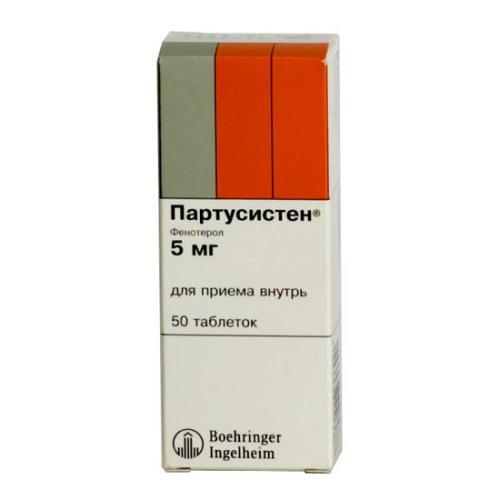
Partusisten is an analogue of Ginipral from the group of beta2-adrenomimetics, which is currently not sold in Russia
According to the latest clinical guidelines, the first choice tocolytic is Atosiban, which is a group of oxytocin receptor blockers. From the name of this group it is clear that they block the functioning of oxytocin receptors and thereby reduce uterine contractions. This medication belongs to a new generation of tocolytics; it is easier to tolerate and has fewer contraindications than Ginipral. But the cost of Atosiban is much higher.
The second line of choice among the recommended tocolytics is Nifedipine. It is a calcium channel blocker. Its use is considered the most promising for tocolysis, since among most tocolytics it causes fewer adverse reactions and increases the frequency of pregnancy prolongation. The problem is that this drug is not registered in Russia as a tocolytic. The instructions even say that it should not be used during the gestational period. Therefore, the pregnant woman must consent to its use in writing. The same situation applies to Indomethacin. As a tocolytic agent, it is prescribed in the form of rectal suppositories.
In Russia, as in most countries, β-mimetics (hexoprenaline) and oxytocin receptor blockers (atosiban) are officially registered as drugs used for acute tocolysis. Magnesium sulfate (MgSO4) is no longer used for acute tocolysis.
V.E. Radzinsky, R.Yu. Eremichev
“Acute tocolysis during premature birth. Evidence and prospects"
Table: Ginipral and other tocolytics
| Active ingredient | For what period is it appointed? | Limitations in use | Adverse reactions | Release form | Manufacturer | price, rub. | |
| Ginipral | Hexoprenaline. | From 22 weeks. |
|
| Solution for intravenous administration. | "Nycomed" (Switzerland). | From 246 for 5 ampoules (2 ml). |
| Tractocil (Atosiban) | Atosiban. | From 24 weeks. |
|
| Injection. | Ferring Germany. | From 2098 per bottle (0.9 ml). |
| Nifedipine | Nifedipine. | From 24 weeks with the consent of the pregnant woman. |
|
| Pills. |
| From 27 for 50 pieces. |
| Indomethacin | Indomethacin. | From 24 to 32 weeks with the consent of the expectant mother. |
|
| Rectal suppositories. |
| From 69 for 10 pieces (100 mg). |
Photo gallery: tocolytic agents
Tractocil is the first-line tocolytic of choice Nifedipine reduces uterine contractility by blocking calcium channels Indomethacin is used with the consent of the pregnant woman
I have a rather conflicting opinion about the need for long-term use of tocolytics. On the one hand, foreign experts in evidence-based medicine explain with their fingers that this does more harm than good. On the other hand, the forums are filled with numerous stories about how the long-term use of Ginipral or Nifedipine helped to give birth to a healthy child after several fruitless attempts. There has even been a small war on the Internet between supporters of the Western approach to pregnancy and those who advocate conservation medicine, which is characterized by the prescription of a large number of drugs for the slightest reason. I think that the truth, as usual, is somewhere in the middle. We know from our good friends living in Germany that before planning a child, they first of all consulted with our obstetricians and gynecologists and subsequently used their advice. German doctors did practically nothing in case of problems. For foreign doctors, a failed pregnancy is not something terrible, and they do not strive to save it at any cost.
In our family, there were no problems with the threat of premature birth. According to the wife, the painful tone of the uterus was easily eliminated by prolonged lying on the side and soothing breathing. And in order for this symptom to appear less often, you just needed to rest more and be on your feet less.

